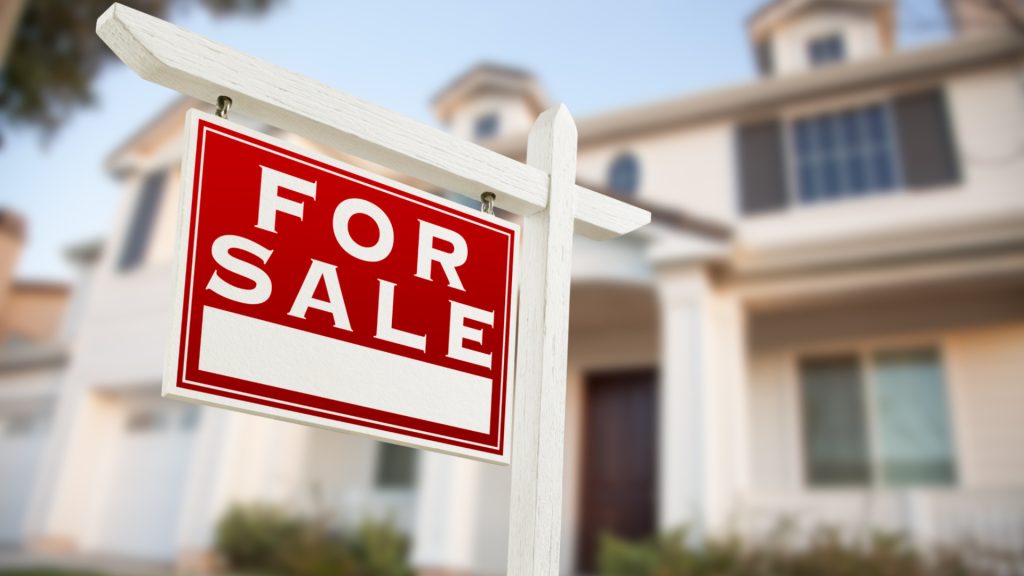Texas REALTORS released its 2023 Texas Real Estate Year in Review report on Tuesday (March 12), and it confirmed what most of us already knew about the Lone Star State. The housing market struggled in 2023, and high mortgage rates were the primary culprit, but 2024 is already showing improvement. Here’s everything we learned from the report.
Home Sales Dip By 11%
According to Texas REALTORS, total home sales in Texas decreased by 11% in 2023, with 327,921 sales being reported. It might seem like a lot of sales, but it’s actually the lowest total since 2016.

Texas wasn’t alone, either. California saw total home sales dip nearly 25% from 2022, with 257,630 sales reported in 2023 – the state’s lowest dip since 2007. Florida reported 258,000 single-family homes sold in 2023, which is far less than the record 351,000 that were sold in 2021.
Active Listings Increase By 36%
Despite a decline in total sales, Texas saw an increase in active listings in 2023 – 89,005 active listings in total. That represents an increase of 35.6% from 2022, but it should come as no surprise with the recent surge of new homes being built across the state.

In fact, Texas has built more than twice the number of homes as California and New York in the past two years. “By our estimate, there were approximately 217,000 total housing units started in Texas over 2023, 26,000 started in New York, and 106,000 started in California,” Matthew Walsh told Newsweek.
Statewide Home Prices Decrease By 1.4%
Now, let’s talk about home prices. With more homes (and fewer buyers) in the market, it’s no surprise that home prices continue to decrease in Texas – albeit not by much. Prices were down 1.4%, with a statewide median price of $335,100 in 2023.

“The biggest drop in median price (-10.4%) occurred in the Austin-Round Rock MSA. However, at $450,000, Austin-Round Rock remained the highest median price in Texas,” Texas REALTORS wrote in their 2023 report.
Metro Areas See Small Increase In Home Prices
While statewide home prices were on the decline, that’s not the case for 17 of the 25 metro areas in Texas – all of which saw an increase. El Paso (7.6%) and McAllen-Edinburg-Mission (6.8%) saw the biggest increases in 2023.

With that said, it’s important to note that most of these increases were small. In fact, all but five of the 25 metros saw an increase or decrease of less than 5%. When you consider how much home prices are dropping across the state, prices are hardly the issue in Texas.
Small Increase In Price Per Square Foot
While the price per square foot did increase in Texas in 2023, that increase was minimal – around 0.1%. Austin-Round Rock and San Antonio-New Braunfels were the only markets to see a decrease, while El Paso and the Rio Grande Valley saw the biggest increase

Of course, there are a lot of factors that play a role in a home’s price per square foot – including location, age, condition, number of rooms, lot size, upgrades, and renovations – and a high price per square foot doesn’t always mean a home is overpriced.
Houses Spend More Time On The Market
With a lot of buyers not entertaining the market in 2023, homes were sitting on the market for an abnormally long time in Texas. According to the report, homes remained on the market for an average of 55 days – representing an increase of 20 days from 2022.

That’s not a good sign for homeowners in a rush to sell their homes. Where it normally takes a month (at its worst), homeowners were sitting around for nearly two months trying to find a good enough offer – and even then, the offer wasn’t what they were hoping for.
Months Of Inventory Climbs In Nearly All Markets
Not only that, but Texas saw an increase in months of inventory in most markets statewide. For those who don’t know, months of inventory is a stat that tells you how long it would take to sell all the existing homes currently listed on the market.

While a healthy market has between 6 and 6.5 months of inventory, Texas had nearly half of that in 2023 – 3.4 months, to be exact. It’s not ideal, but it’s far better than the 2.6 months of inventory Texas had in 2022.
Jef Conn Says 2024 Could Be Better
“While higher mortgage rates kept some buyers on the sidelines last year, that has led to a lot of pent-up demand,” said Jef Conn, chairman of Texas REALTORS. “Sales have picked up early this year, and this spring is shaping up to be an active market.”

“Despite headwinds from mortgage rates, Texas real estate sales continued at a healthy pace in 2023,” added Conn. “Market conditions vary by location-even down to the neighborhood level-so it’s always a smart move to work with a REALTOR who knows your area.”
Problem #1: Higher Mortgage Rates
While Texas’s housing market could improve in 2024, several problems might get in the way of this – and high mortgage rates are one of the biggest culprits. As long as mortgage rates are high, buyers will hesitate to buy and, instead, try to wait out the noise.

The good news is many experts expect mortgage rates to gradually decline as the year goes on. In fact, some experts expect rates to dip below 6% by the end of 2025 – especially as the U.S. economy weakens, inflation slows, and the Federal Reserve cuts interest rates.
Problem #2: Higher Home Insurance
Due to the rise in extreme weather conditions – most of which are caused by climate change – home insurance rates in Texas are skyrocketing past the national average. When you combine this with the rise in mortgage rates, it’s clear why buyers are hesitant in Texas.

According to Insurance.com, Texas homeowners paid on average $4,142 a year in 2023. The national average last year was just $2,781 – a difference of $1,361 (or $113.42 per month). That’s $113 that could be going to groceries, gas, healthcare, or childcare.
Problem #3: Property Taxes Remain High
The third problem facing Texas right now is property taxes, which have been high for a number of years but show no real signs of slowing down in the near future. It’s one of the more disappointing aspects of living in Texas, especially since there’s no income tax.

According to Rocket Mortgage, Texas ranks 46th out of the 51 states (and D.C.) in terms of effective property tax rate. At 1.68%, the only states with a higher property tax rate are Connecticut, Vermont, New Hampshire, Illinois, and New Jersey.
Gov. Abbott’s Tax Cut Package Didn’t Help Much
At the start of this year, a new $18 billion tax cut package for Texas property owners came into effect as part of Gov. Greg Abbott’s promise to ease the financial pressure on his state’s residents. While some people saw relief, others did not.

In fact, many residents are complaining that they can’t keep up with the cost of property taxes – even with the new tax cut package. For example, one resident is paying more than $1,300 more this year in property taxes, compared to last year – and they aren’t the only one!






